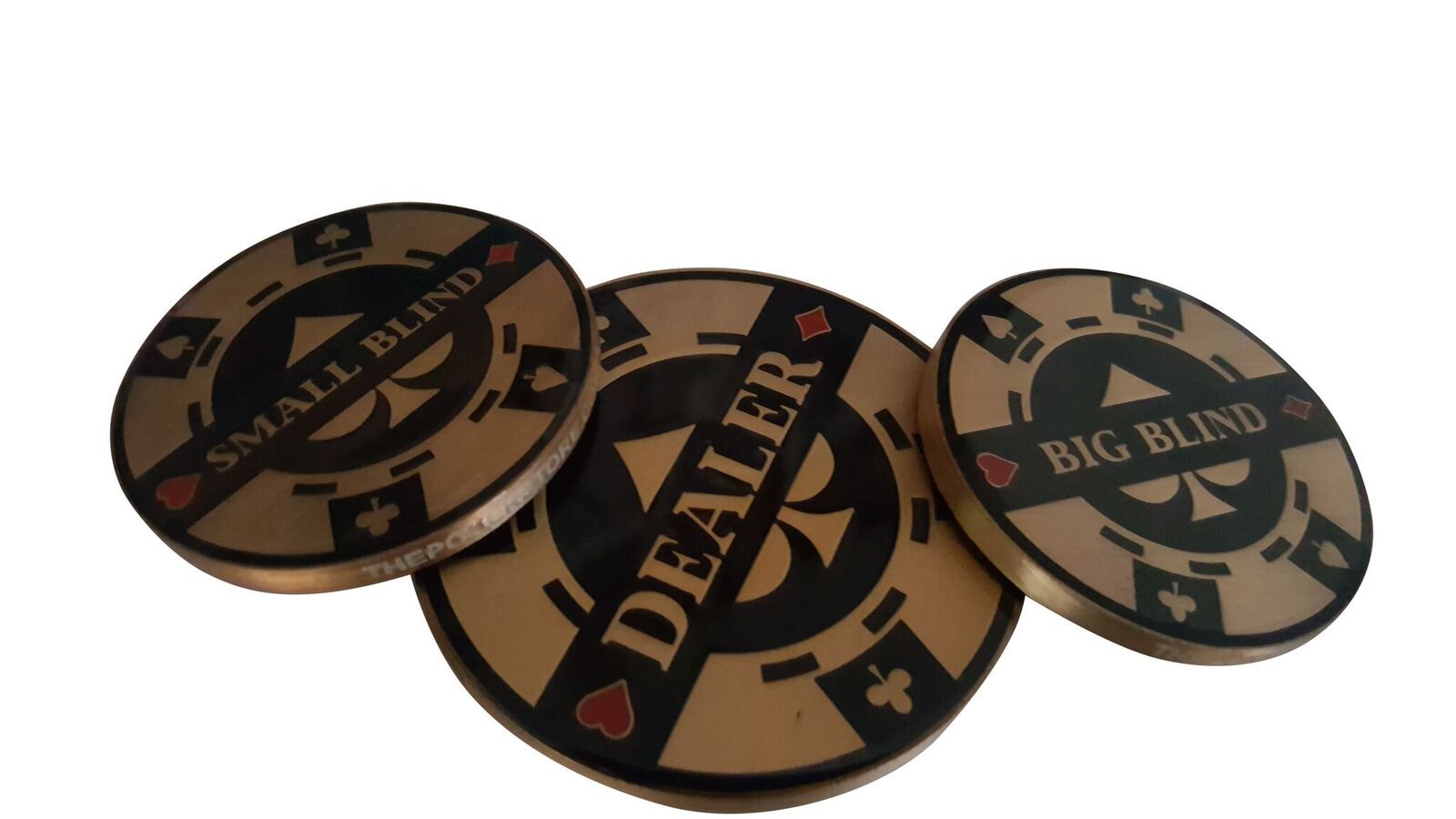In Texas Holdem, the blinds are the two positions found immediately to the left of the dealer button. They are named as the big blind and small blind. When the cards are dealt, the person immediately to the left of the big blind is the first one to have the option to call, raise or fold. The next player is the second one to have the option to call, raise or fold. As always, first is better than third. There is a slightly different philosophy behind the position of the blind. When you are in the big blind, you have the greatest advantage because you are the last one to act. After the flop, you are in the best position to decide whether or not to continue along with your hand. From the small blind, you have less of an advantage because you haven’t seen any cards yet. But, still, you have to play your hand in a manner similar to the last hand you played.
As the dealer button is moved to the left, the positions of the blinds on the table are positioned closer together. This is seen as a basic tenet of poker, where you should play a better hand from the blinds than from the dealer. After a game or two, this generally becomes obvious. But, for the purpose of teaching and honing your skills, you should understand that the blinds naturally belong to the player with the smallest amount of chips. This is because most novice players are not comfortable in the position of the big blind, and they are especially uncomfortable in the position of the small blind. As a result, they are constantly calling the big blind, and thus giving away their chips.
As a result of this common technique, the other poker players at the table will soon know just how important it is to play from the blinds as often as possible. They will grow to expect those hands from the blinds, and be more willing to call the raises. Nonetheless, for the most part, playing hands from the blinds is a risky, unsure gamble. Because, no matter what cards you have, you are always uncertain of what the other people at the table have. A way to play cards from the blinds that doesn’t involve thinking about your own cards is to always raise the same amount. Regardless of whether you have a premium hand or a junk hand, always raise the same amount. Avoid the hi-lo raises common in a game like Seven Card Stud. Although a similar strategy applies to Seven Card Stud, the risks are not quite as high in that game since the player actually has a better chance of losing the whole pot (by going ‘over’ the amount bet in the pot) than winning it.
In Texas Holdem, the same basic strategy applies to both the big and little blind. Do not make sudden shifts in your playing style when the blinds are changing. Either slow down, or increase your raises during good or bad luck periods. Remember, most blinds are nonexistent during full ring games. Generally, a good player should be raising a range of hands, rather than a single hand.
In other words, you should be playing the table, and using common sense, rather than force play. One of the ways to ‘tell’ if someone is bluffing is to watch a pot between two players and then watch them steal a pot after each other. If they are both tight, they aren’t bluffing. If they both know that they are holding good cards, they aren’t bluffing.
This is a fairly objective way to determine if someone is bluffing. If you find yourself wondering, or stumped, you probably are, or would be if you were them. Either way, the easiest and easest way to learn to determine if someone is bluffing, is to watch what they do in different situations. Whether you are in a chat room or at a table, you will be able to add to your poker knowledge of what to do, when people are bluffing. It is hard to put your opponents on, but with some extra practice, you can learn what they are holding based solely on their body language.
While you may be able to decipher some of their tells, you may not be able to accurately read their cards. Since you are not in direct communication with them, it will be more difficult to put two players on a hand. When you are playing live, you can observe a table before you sit at it, and thus, you can pick up “tells” on other players. When playing online, you are limited to taking mental notes, and cannot watch for any changes in a player’s body language.
